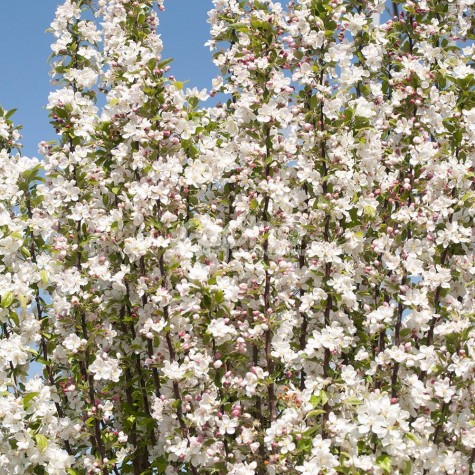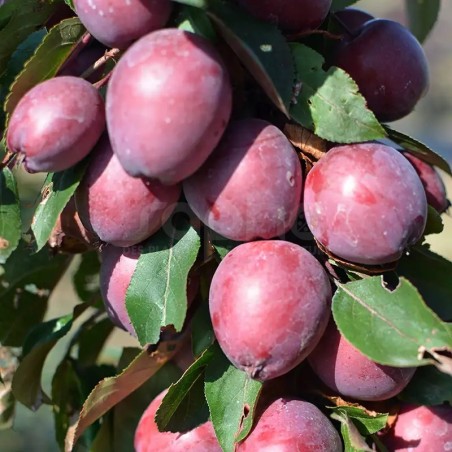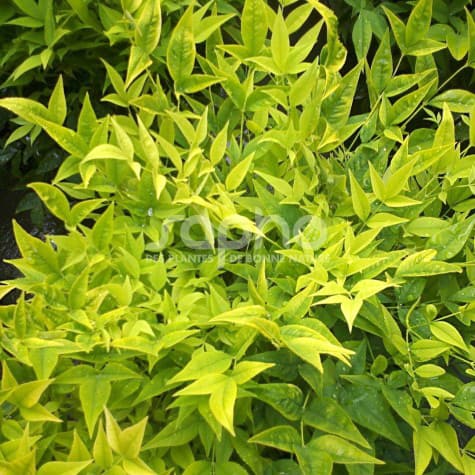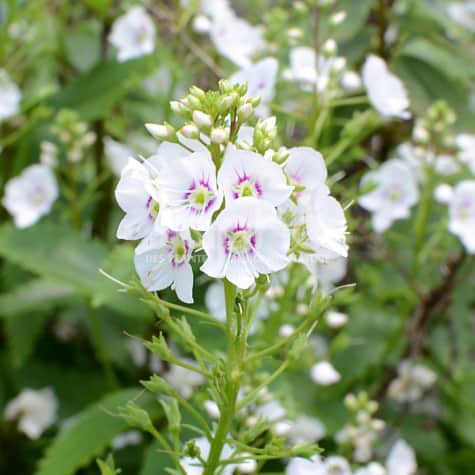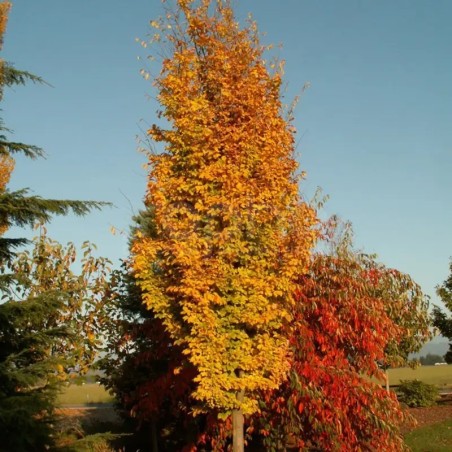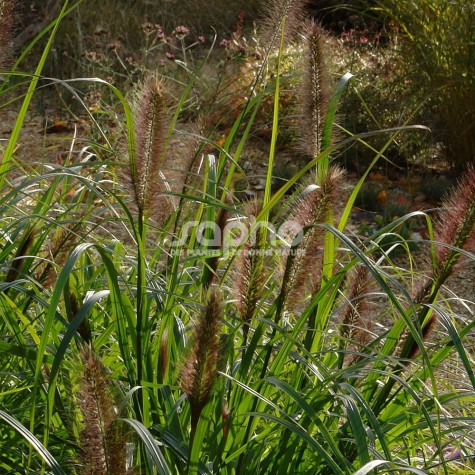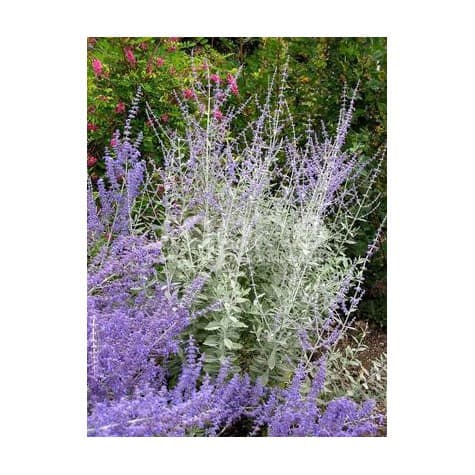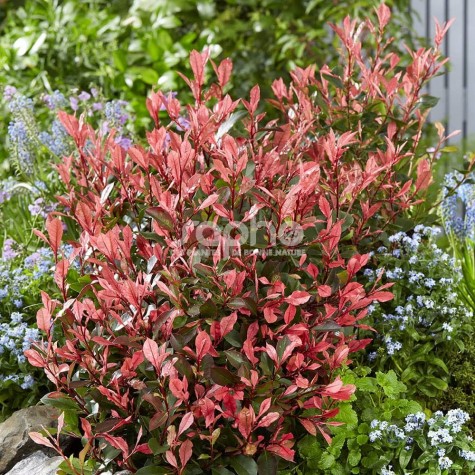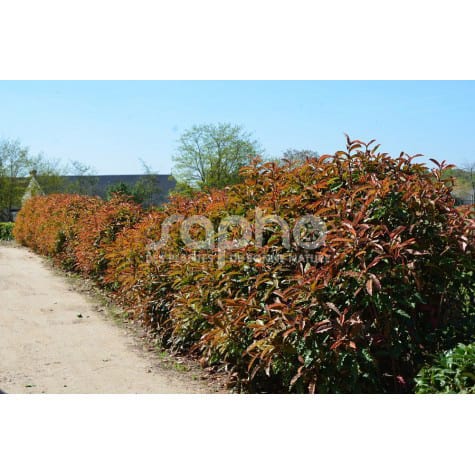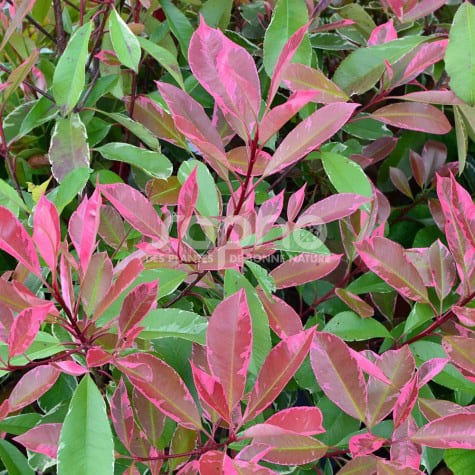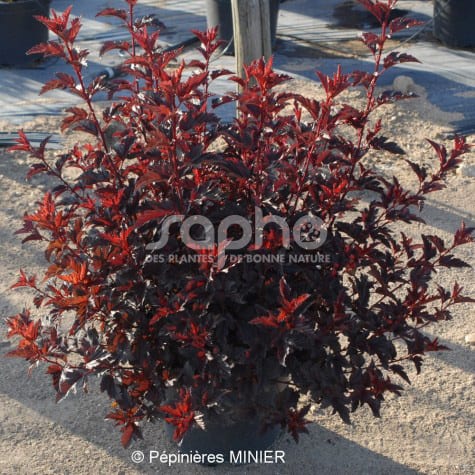Naturally a STAR since its creation.
This tree is of semi-spreading growth, reaching a height of 3 to 4m in ten years and has a harmonious shape, which it keeps without the necessity of pruning. Its foliage is green.
In April, 'Evereste' covers itself in bright pink flower buds, which bloom as pure white bouquets of flowers. The quality and the abundance of its pollen make it an ideal pollinator, precious for fruit growers (in proportion of 6 - 8% of all varieties of early or semi-early flowering).
The cherry sized fruits are orange with thin red stripes. They apprear in autumn and have the particularity to last well into winter.
'Evereste' has also been chosen by the INRAE selectors for its resistance to the major diseases such as fire blight, scab and mildew.
Nearly a million plants have been sold in Europe since its creation in 1974.
Its ornamental qualities, its reasonable dimensions and its easy care make it an excellent small urban tree if grown full standard; in clumps it is very valuable in the composition of flowering hedges and in shrub borders.
Filter By
Foliage
Where to find Sapho plants ?
For young plants
You will find the names of Sapho-licensed nurserymen at the bottom of each variety sheet.
For available plants
Please ask your nursery suppliers.
Each licensed propagator is free to market his young plants to all his customers.
Categories
Menu
Trees and shrubs
A landmark in the garden!
A columnar habit when young, evolving into a pyramidal form
Young, purple foliage that turns dark green
Spectacular intense red flowering in bud, evolving to carmine pink
Numerous plum-sized, purplish-red fruits with red flesh persist until late autumn
Its initial columnar shape evolves into a pyramid shape with age, making it ideal for small spaces
In springtime its chartreuse coloured leaves are very attractiveA Nandina with a brand-new colour! The new shoots are yellow-green, chartreuse or also lime green and very bright. In full sun the outer leaves keep their chartreuse colour, whereas the inner leaves turn light green.Its shape is very interesting, forming a bushy and branched little shrub of under 1 m, like a ball.It never flowers, or very seldom.Recommended to illuminate the darker parts of the garden in the spring, it also accepts to be grown in pots.Trophies: Gold medal at PLANTARIUM 2014 (Boskoop - NETHERLANDS)Honored with a Retailer's Choice Award™ at SNA 2014
A deep foliage, abundant and delicate white flowers all summer longOriginating in New Zealand, this evergreen selection is hardy down to -12° C.It's leathery, regularly toothed leaves are first tender green, changing afterwards to a pretty dark green. The young stems are purple-brown.'Avalanche' is very floriferous from June to September. It covers itself in a cloud of simple, small white flowers with a purple center, standing out well on the foliage.Its long summer flowering, a quick growth and bushy shape make this variety an ideal plant for small spaces and pots.
A new asset for urban green spaces
An upright, columnar habit that holds up well with age
Young, tender-green foliage that turns from golden yellow to apricot in autumn, which is highly original for a Parrotia
Robust branches (which withstood the American ice storms)
Its habit, adaptation to different soil conditions and resistance to disease and urban conditions make it ideal for low-maintenance or no-maintenance areas along roadsides or in urban parks
Charming black panicles contrasting with a green foliage
This variety of pennisetum has large, red-tinged spikes that turn purple-black.
The spikes appear abundantly, covering the entire plant from summer to late autumn.
It forms a rounded clump with narrow, glossy green foliage.
Use in beds, in association with other perennials or shrubs.
Bright, dense and upright, with lavender blue flowers until autumnThis bright variety of Perovskia is of a dense and upright habit and maintains its beautiful shape.Its aromatic foliage is silvery grey-white and its robust stems have metallic highlights.The slightly scented lavender blue flowers come out first in June-July. Pruning at the beginning of August allows a second, even denser flowering in September-October.SILVER BLUE is resistant to drought and prefers a sunny spot, but tolerates half shade. It is to be used as a border or in pots.
A long, dazzling and fragrant flowering period!
A clear improvement on the Philadelphus x virginalis group
Flowering all along the branches, from mid-May to the end of summer
Large, full double, pure white flowers, with a more intense fragrance
Very healthy foliage throughout the season
A compact, well-branched, harmonious habit, easy to grow, suitable for gardens (even small ones) and pots
A tiny Photinia full of energy! Made for balconies or low hedges
This variety of photinia is particularly compact and dense-growing, with sturdy stems.
Its dark green foliage contrasts with the bright pink young shoots.
An easy-care plant, it bears pruning well and branches well.
Perfect for pots, balconies or low hedges.
Chocolate coloured and toothed leaves : an original foliage with this new Photinia.The originality of the foliage brings a revival to the Photinia. The leaf blade is ondulated and finely toothed. The young shoots, copper at first, take on the unusual chocolate shade, and then turn dark green.This cultivation, tested in nurseries for several years, performs well: it branches and develops well in containers, its growth is good. Hardy, CRUNCHY® keeps its leaves in winter and has a good resistance to powdery mildew. It is therefore recommended for hedges, with or without clipping.Trophies: FIRST PRICE at FLORMAT - MIFLOR 2014 (Padova - ITALY)
Beautifully mixed colours and an upright and regular formIts variegated foliage brings colour throughout the year. Photinia Louise has also been selected for its vigorous, erect growth and its ample vegetation that's regular, compact and dense. Photinia Louise is a shrub with persistent leaves and changing colours. In spring and autumn the young shoots are bright red spotted with pink.The developing leaves become thick and green, spotted wih creamy white. Its flowers, in May, are quite discreet, forming creamy white umbels. Upkeep is easy as it needs little pruning other than that required by the garden. In a hedge, a mixed bed or as a solitary shrub, 2 to 3 m high, Photinia Louise will enliven a garden throughout the year.
The most dense and the darkest of the Physocarpus with purple foliageALL BLACK® is remarkable because of the colours of its dense foliage: in spring the young shoots are of a beautiful bright red-purple. The leaves then take on a darker shade, turning nearly black.It has a round, bushy, well branched growth. Its dimensions stay very moderate.The small ball shaped, white inflorescences bloom from May to June.They are followed by red fruits in summer. Having a dense shape, the shrub is ideal for small containers, smaller gardens, and border creations.

